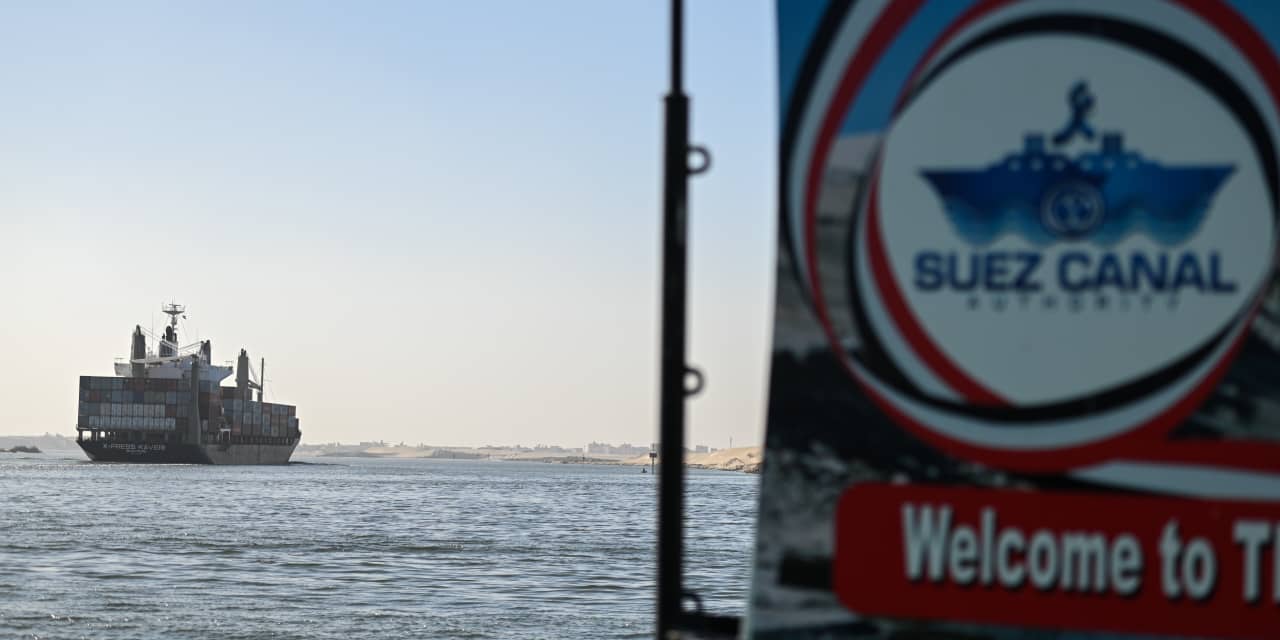The Houthi attacks on cargo ships in the Red Sea and the drought conditions impacting the Panama Canal have sparked concern about the impact on global supply chains.
Last week, for example, British clothes seller Next PLC warned that the Houthi attacks could disrupt the company’s supply chains and delay U.K. deliveries by up to two and a half weeks, and there are worries about potential disruption for American retailers.
The Red Sea is a critical shipping lane for cargo traveling through the Suez Canal, which is said to account for about 12% of global trade. Approximately 30% of global container traffic traverses the Suez Canal, transporting $1 trillion of goods a year, the government of New Zealand reported in 2021.
Some major shipping companies have re-routed their ships to travel around the Cape of Good Hope in South Africa, but that results in a longer voyage. T.D. Cowen estimates that the detour adds eight to 12 days on journeys from the Middle East or Southeast Asia to the Port of Rotterdam in the Netherlands.
Related: Barrage of Houthi drones, missiles shot down over Red Sea, U.S. says
The disruption in the Red Sea has resulted in a spike in freight rates, according to a Citi note released Wednesday. Cancelled sailings have also increased to 11.5%, from 8.5% last week, Citi said. “We think the bottleneck at Red Sea and Panama Canal contributed to elevated cancellations,” wrote Citi analyst Sathish B Sivakumar, in the note.
But D.A. Davidson analyst Linda Bolton Weiser says two toy-industry giants are well-positioned to avoid the spike in ocean freight rates. “The majority of the freight-rate exposure of Buy-rated Mattel (MAT) and Neutral-rated Hasbro (HAS) is related to shipping from Asia to the U.S. West Coast, not from Asia to Europe,” she wrote, in a recent note. Mattel Inc.
MAT,
and Hasbro Inc.
HAS,
also have contracts for freight rates, and generally do not buy containers on the spot market, although they could be susceptible to surcharges, Bolton Weiser added.
The spot market refers to the one-time fees paid to ship containers — these so-called spot rates can be volatile. The Wall Street Journal reported that the spot-market price to move containers between China and Rotterdam reached $3,577 in the week ending Jan. 4, a 115% hike from the prior week.
Related: Retailers could suffer ‘perfect storm’ of Red Sea and Panama Canal disruption, says logistics expert
D.A. Davidson’s Bolton Weiser also noted that shipping of toys out of Asia is at a seasonal low point during the first quarter, with peak shipping of toys from Asia occurring between August and September.
Other elements of Mattel’s and Hasbro’s cost structures are likely to be tailwinds in 2024, according to the analyst, who pointed to favorable trends in plastic resin costs and electronic chip-component costs, which are in a deflationary trend, as well as lower China manufacturing costs.
Elsewhere in the consumer-goods sector, Bolton Weiser told MarketWatch that she recently met with Helen of Troy Ltd.
HELE,
which ships a lot of durable consumer goods from Asia to Europe. “They said they are watching the situation, but that they operate under contracts for ocean freight, so a spike up in spot rates in the near term does not impact them right away,” she said. “I would think it is the same for the toy companies.”
Related: Fallout from Red Sea attacks could boost this sector’s margins, says T.D. Cowen
Mattel’s stock is down 1% on Thursday, while Hasbro shares are down 3.1%, outpacing the S&P 500 index’s
SPX
decline of 0.2%. Helen of Troy’s shares are up 0.2%.
Read the full article here










